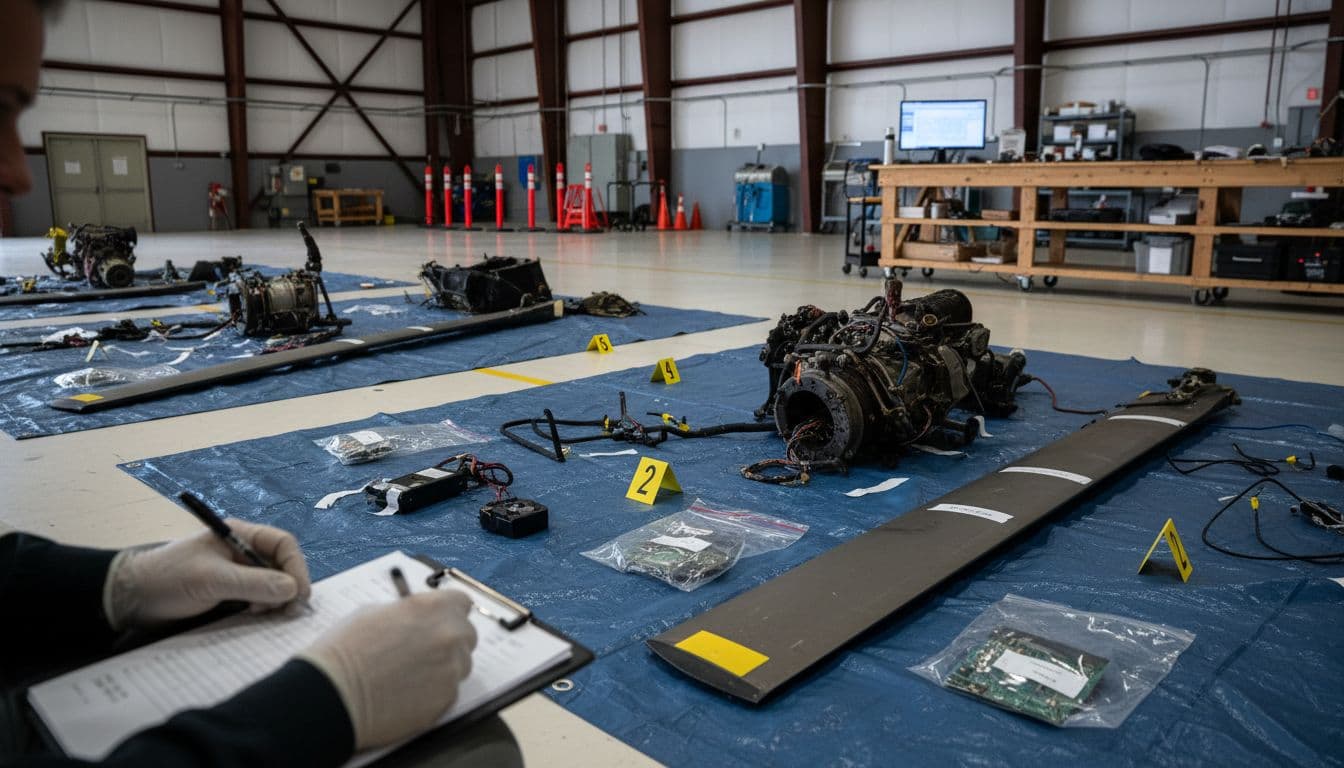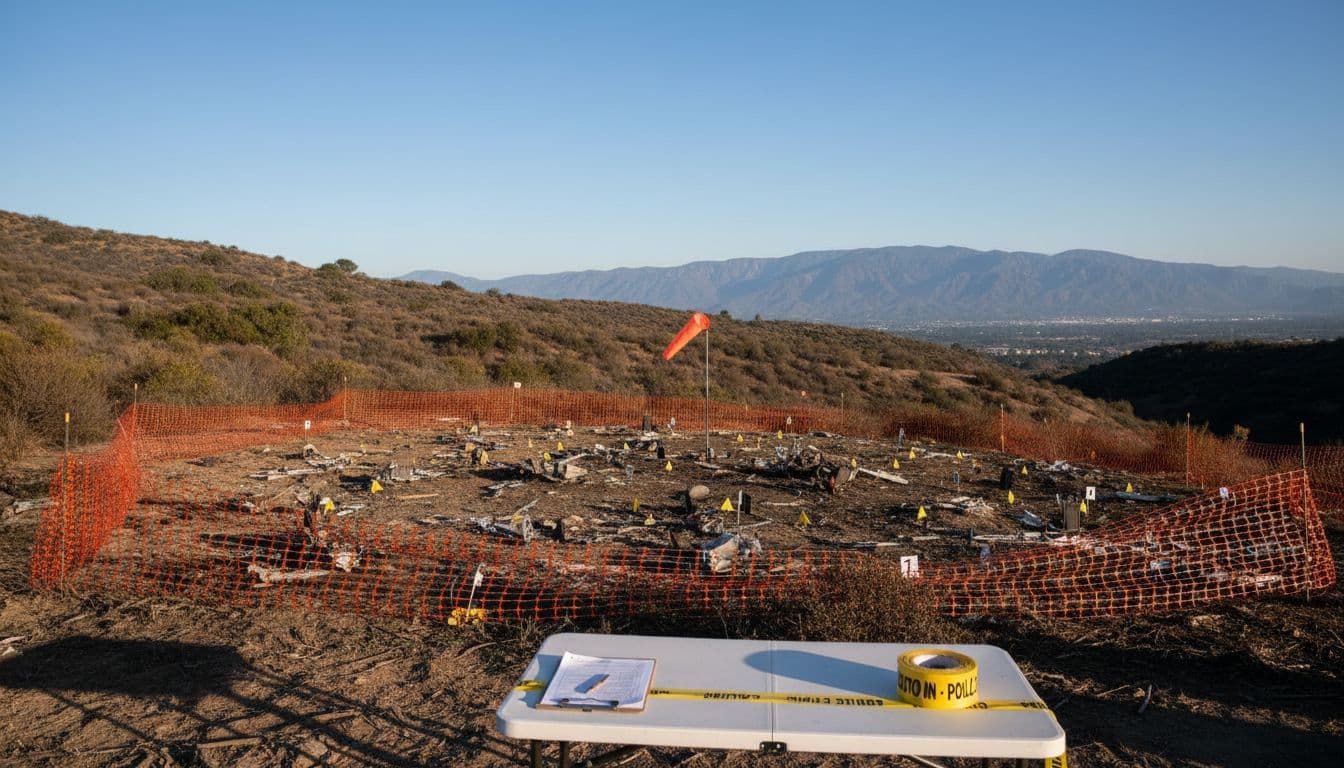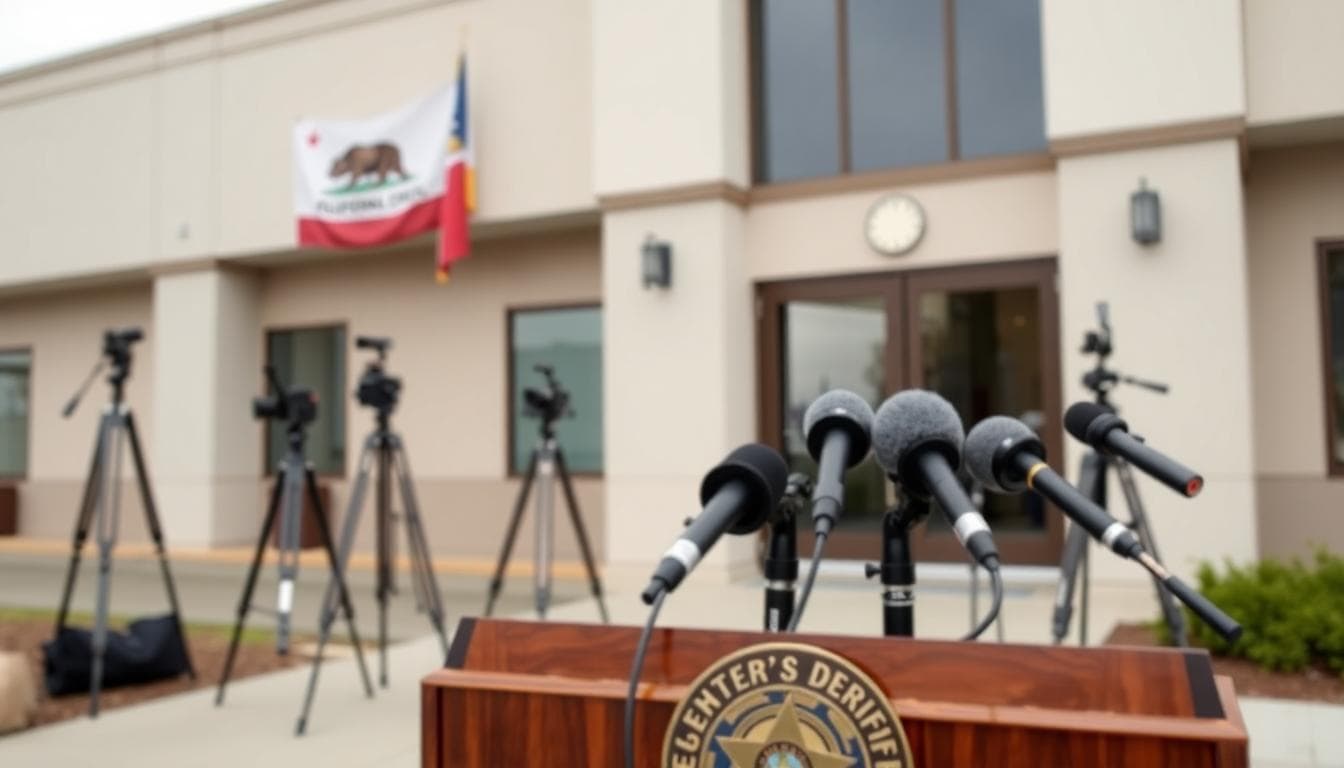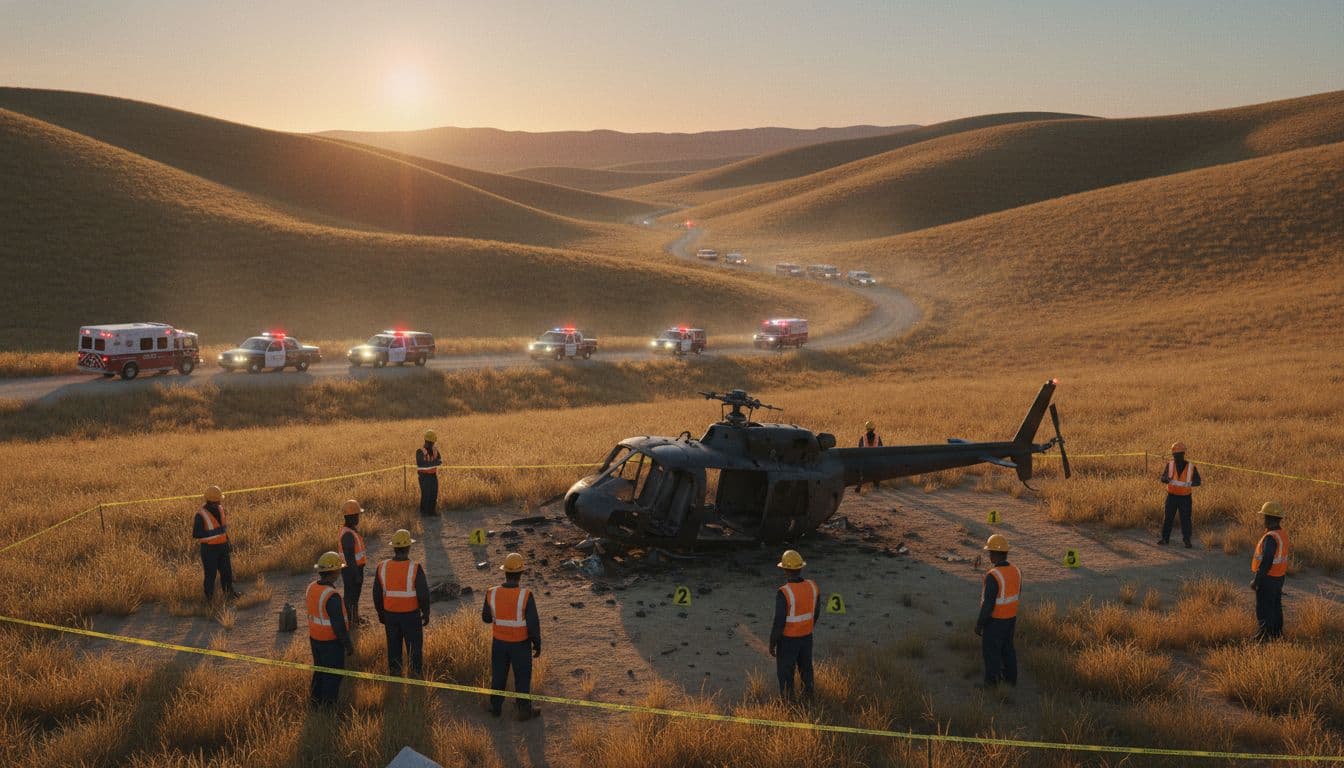Summary: Authorities have launched a full investigation into a helicopter crash in California. Early efforts center on securing the site, preserving evidence, and gathering witness accounts. Here’s what officials typically analyze after a crash like this, how the process unfolds, and what the public can expect in the days ahead.
Securing the Scene and Preserving Evidence
After a crash, the first priority is safety, then evidence. Local responders establish a perimeter to keep the site intact. Fire hazards, fuel leaks, and battery risks must be managed. Once stable, investigators begin a methodical survey. They map debris, tag components, and capture photos and video from multiple angles. This baseline record is critical for later analysis.
Site conditions are documented in detail. Weather, visibility, and terrain can shape both the flight and the aftermath. Investigators note wind direction, temperature, and cloud layers. They also map the slope, vegetation, and obstacles near the impact area. All these factors help reconstruct the aircraft’s final seconds.

From Field to Hangar: The Wreckage Examination
Once the site work is complete, wreckage often moves to a secure hangar for detailed study. Teams lay out airframe sections and major components to look for patterns. They examine the rotor system, gearbox, fuel system, and flight controls. The goal is to identify pre-impact failures versus damage caused by the crash itself.
Investigators pay special attention to the continuity of controls. If linkages and cables show proper connections up to the point of impact, mechanical failure becomes less likely. They also check for signs of power at impact. Burnished metal, blade strikes on terrain, or “mowing” patterns in vegetation can indicate whether the rotor was producing power before the crash.
Pilot Qualifications, Flight Plan, and Operations
On the human factors side, the team reviews pilot certificates, medical status, recent flight hours, and training. They analyze the mission details, including departure point, route, altitude choices, and intended destination. If available, flight-tracking services, ADS-B data, or radar returns can help reconstruct the aircraft’s path and altitude changes.
Investigators also examine operational pressures. Was the pilot on a tight schedule? Were there demands from clients or passengers? Did the flight push weather or daylight limits? These questions help identify risk factors that have contributed to past helicopter accidents, such as scud running, inadvertent entry into instrument conditions, or controlled flight into terrain.

Weather, Terrain, and Airspace Factors
Weather is one of the most common variables in helicopter safety. Even light fog, haze, or low clouds can reduce visibility enough to increase risk. Investigators will gather METARs, TAFs, and pilot weather reports from the time frame around the crash. They assess cloud ceilings, visibility, winds aloft, and temperature-dew point spread to evaluate the chance of reduced visibility or icing.
Terrain and obstacles are equally important. Hillside operations can create optical illusions that mislead pilots about altitude and attitude. Power lines, towers, and trees pose hazards, especially at low level. Investigators will also look at controlled and special-use airspace, including any temporary flight restrictions or local advisories that may have been in place.
Airworthiness Records and Maintenance
Maintenance history provides the technical backbone of the inquiry. Investigators request airframe and engine logs, component life records, and recent inspection notes. They verify compliance with airworthiness directives and service bulletins. Particular attention goes to critical components like rotor blades, swashplate assemblies, drive shafts, and fuel control units.
Any recent repairs or parts replacements are scrutinized. Was proper torque applied? Were safety wires in place? Were aftermarket or overhauled components installed according to spec? If needed, parts may be sent to manufacturers for metallurgical analysis to check for fatigue, corrosion, or manufacturing defects.

Onboard Systems, Avionics, and Data
Not all helicopters carry flight recorders, but many have avionics and engine control units that store useful data. Investigators will search for GPS devices, portable tablets, and any recoverable digital memory. They attempt to extract logs that can validate speed, altitude, heading, engine performance, and time stamps.
Radio communications and emergency locator transmitter activity are also reviewed. If air traffic control recorded transmissions, those tapes can offer clues about pilot workload and decision-making. Witness statements from people on the ground may help fill gaps, especially near the moment of impact.
Timeline for Findings and Public Updates
In a typical case, agencies release an initial summary within a day or two, focusing on the basics: aircraft type, number of people onboard, location, and environmental details. A preliminary report often follows within two to four weeks. That document describes factual information without assigning probable cause.
The final report, which includes probable cause and contributing factors, can take months or longer. Complex cases require lab work, manufacturer input, and multiple rounds of analysis. Throughout this period, local authorities may share operational updates, while national investigators handle technical findings.
Safety Lessons and Community Impact
Every crash weighs on families, first responders, and the aviation community. Investigations aim to prevent recurrence by identifying the chain of events, not by assigning blame. Common safety improvements include more rigorous go/no-go decisions in marginal weather, better preflight planning, and recurrent training focused on spatial disorientation and decision-making under pressure.
Communities often ask how to reduce risk near homes and public spaces. Practical steps include clear helipads with marked approach paths, awareness of nearby obstacles, and up-to-date local aerial charts for operators. For the public, understanding that low-flying helicopters may be conducting emergency or utility work can reduce distractions and hazards near flight paths.
What to Watch Next
- Official briefings: Look for updates from local authorities and federal investigators within the next few days.
- Weather analysis: Expect more detail on visibility, ceilings, and wind at the time of the flight.
- Maintenance records: Agencies will review inspection logs and any recent component changes.
- Data recovery: Investigators may attempt to retrieve GPS or engine data to clarify the timeline.
- Preliminary report: Typically released within a few weeks, summarizing factual findings.
To contact us click Here .

